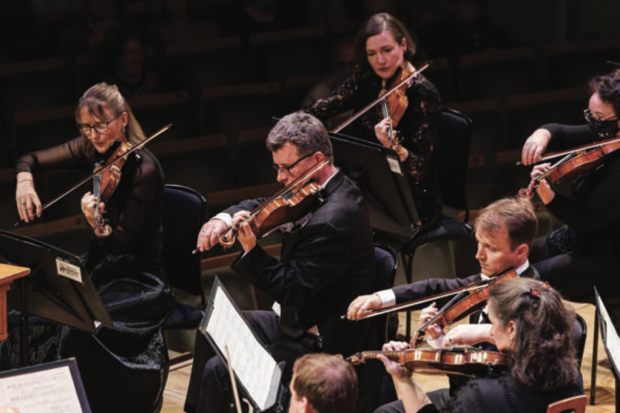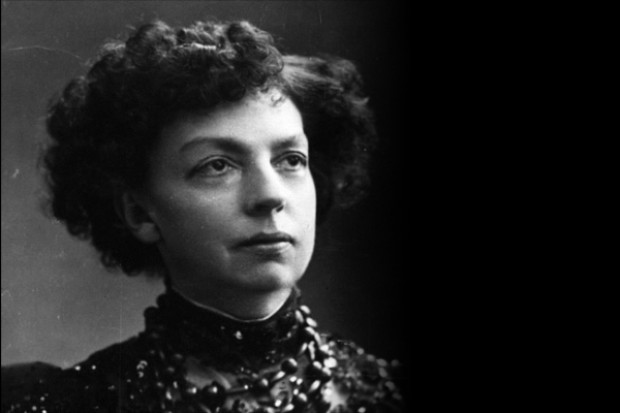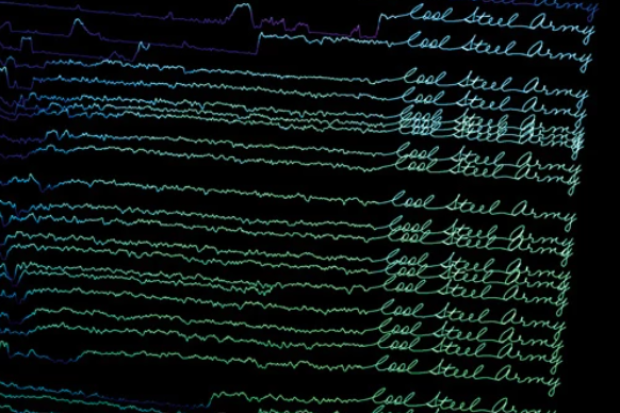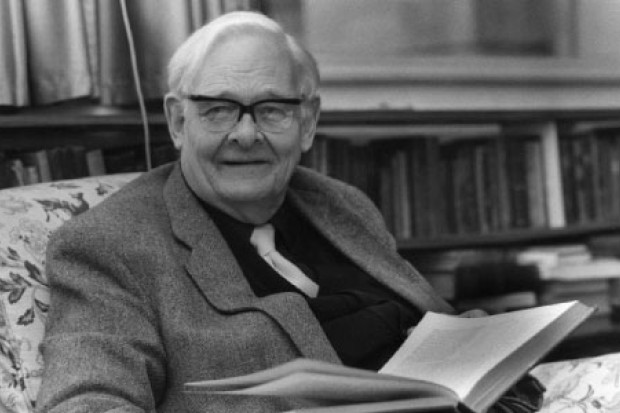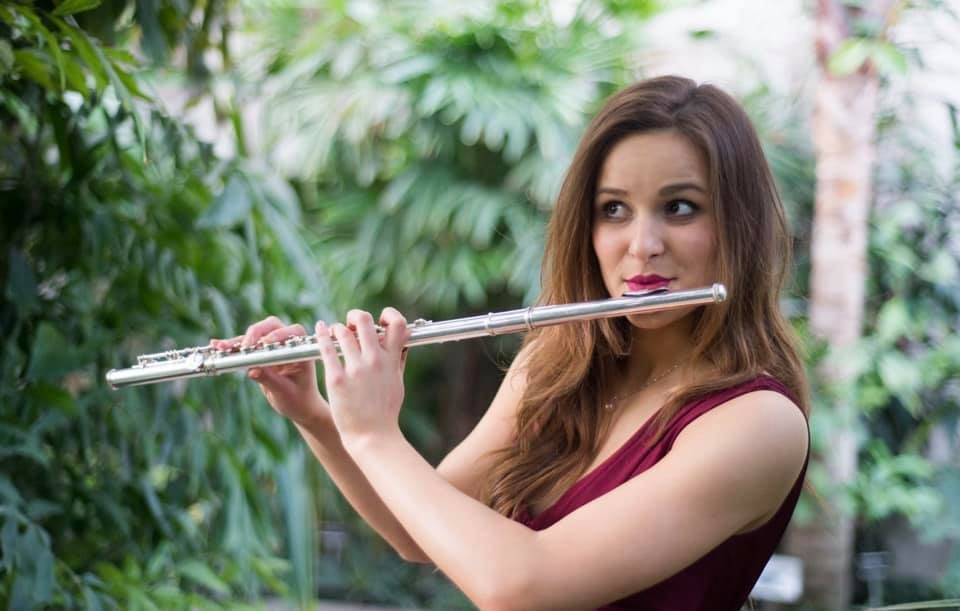
Miriam Kaczor
More to Unite Than Divide
The third instalment of the Female Composers Series took place on 24 January in the Kevin Barry Room featuring a concert of French music from the Belle Époque and early twentieth century. The withdrawal of soprano Sharon Carty due to illness necessitated a substantial reworking of a programme that was originally to have included songs by Hope Temple (aka Alice Maud Davis), Augusta Holmès, Cécile Chaminade and Hector Berlioz. As a replacement, rising flute star Miriam Kaczor stepped in, bringing with her two staples of the flute repertoire – Chaminade’s Concertino in D major and the indispensible Syrinx by Debussy. She was joined by two experienced musicians of the Dublin music scene: Gillian Williams on violin, and pianist Una Hunt who is well-known for her dedication to neglected areas of music history.
In her introductory remarks to the concert, the series co-curator Dr Laura Watson emphasised the need to not only increase the ‘visibility and audibility’ of female voices from all eras of music history but also to place this work in its historical context – hence the inclusion of Debussy. In words aimed squarely at detractors of such ‘inclusion’ initiatives, Watson eloquently pointed out that despite their gender differences there is much more that unites composers like Lili Boulanger and Debussy than divides them and stressed that ultimately the work of female composers needs to be judged on its aesthetic merit first and foremost.
Spotlight on Bonis
While the late withdrawal of Carty clearly meant a falling back on some ready-to-hand repertoire, the reworked programme placed the spotlight on the less well-known music of Mélanie Bonis whose style owes something to Cesar Franck though there are also shades of early Debussy. Her Carillon mystique for solo piano which opened the concert is a gentle berceuse with a repeated descending figure in the left hand providing the backdrop for cascading, improvisatory-like figurations in the right hand.
Although her Sonata in C-sharp Major for Flute and Piano is a more substantial work, it is also more frustrating in that the material isn’t always strong enough to sustain the highly discursive form. Take the first movement for instance. It starts promisingly enough with a well-defined motive in the opening bars but almost immediately ditches this idea in favour of non-descript transitional material. The same thing happens in the third movement which again opens with a beautifully shaped melody over a descending bassline leading to a highly affecting passage for the piano, the beauty of which you can judge for yourself by listening at the link below (until 1.36).
Again though, the music seems to lose its way, turning to insipid scale fragments and sequences. Some of the music is undeniably high-quality, but too often it meanders into less promising territory and although it constantly threatens to heat up, it never really comes to the boil. Nevertheless, Kaczor and Hunt put in a great performance and did their best to extract as much expressivity from the music as possible.
Dazzling passagework
Chaminade’s Concertino for Flute is a different beast altogether. A tour-de-force of the genre, it combines a strong melodic profile with dazzling passagework – the two essential ingredients for virtuoso pieces of this sort. In this reduced version for piano and flute the difficulties were well surmounted by Kaczor and the coordination with Hunt at the piano was excellent.
It is often said that Chaminade’s facility for churning out popular miniatures and character pieces contributed to the decline in her reputation as the century wore on. That said, on hearing her Sérénade Espagnole (arranged by Fritz Kreisler) and the Capriccio for violin and piano, one can hear why they were so popular back in the day. Although the Sérénade is a trinket in the crowd-pleaser mould, the Capriccio with its shifting offbeat accents and surface detail, possesses one of those tastefully melancholic melodies that go beyond the mere charming. Both of these pieces were given assured performances by Gillian Williams even if some of the filigree details were occasionally glossed over.
Lili Boulanger is best known as the younger sister of Nadia Boulanger – the famous teacher of any number of mostly overrated American composers. She became the first woman to win the coveted Prix de Rome in 1913 and anyone wishing to acquaint themselves with the full extent of her talents should listen to the phenomenal orchestral piece D’un soir triste, completed in the last year of her tragically short life.
Also completed that year and featured in this concert was D’un matin de printemps, a comparatively straightforward piece that was primarily intended to show off the composer’s skill at orchestration. In the reduced format for piano and violin, this aspect is obviously diminished, but it made for pleasant listening as did the other Boulanger piece on the programme, Cortège, which is an irresistibly upbeat and catchy miniature.
Well balanced
The concert finished with a performance of Debussy’s Sonata for Violin and Piano. Although the distinctiveness of this work stuck out, it certainly didn’t overshadow the other works on the programme. In this respect the concert was well balanced, even if, from a contextual point of view, there were probably a few too many miniatures by female composers set against a substantial work by the solitary male representative. Then again, this was originally intended to be a very different concert.
Overall, the concert was an illuminating experience and if the series maintains this quality it should go some way towards encouraging concert-goers and performers to seek out further works by these neglected female composers.
The next concert in the Female Composer Series – ‘Trailblazers’ – takes place on 7 February at the NCH and features Concorde ensemble performing works by Thea Musgrave, Sofia Gubaidulina, Marta Ptaszynska, Jane O’Leary, Nicola LeFanu, Kaija Saariaho, Unsuk Chin and Joan Tower. For tickets, visit www.nch.ie.
Published on 29 January 2019
Adrian Smith is Lecturer in Musicology at TU Dublin Conservatoire.












